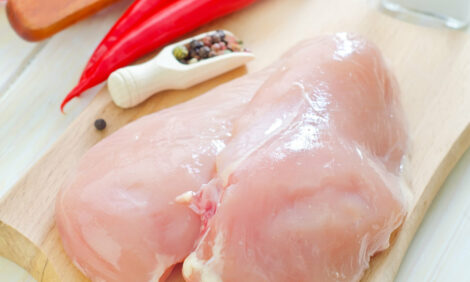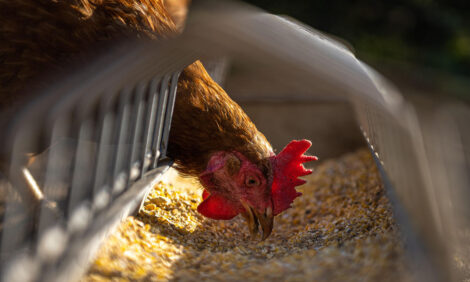



Colonisation Factors of <em>Campylobacter jejuni</em> in the Chicken Gut
In a review of the factors affecting the colonisation of C. jejuni in the gastrointestinal tract of chickens, researchers based in Belgium identified a number of targets that may lead to the development of a vaccine for poultry to reduce foodborne illness in humans.Campylobacter-contaminated broiler chicken meat is an important source of foodborne gastroenteritis and poses a serious health burden in industrialised countries, explain David Hermans of the University of Ghent in Belgium and co-authors there and at the Institute for Agricultural and Fisheries Research, Technology and Food Unit in Melle and the European Food Safety Authority (EFSA). Their paper is published in the journal, Veterinary Research.
Broiler chickens are commonly regarded as a natural host for this zoonotic pathogen and infected birds carry a very high C. jejuni load in their gastrointestinal tract, especially the caeca, continue Hermans and co-authors. This eventually results in contaminated carcasses during processing.
Current intervention methods fail to reduce the colonisation of broiler chicks by C. jejuni due to an incomplete understanding on the interaction between C. jejuni and its avian host. Clearly, C. jejuni developed several survival and colonisation mechanisms, which are responsible for its highly adapted nature to the chicken host.
But how these mechanisms interact with one another, leading to persistent, high-level cecal colonization remains largely obscure.
A plethora of mutagenesis studies in the past few years has resulted in the identification of several of the genes and proteins of C. jejuni involved in different aspects of the cellular response of this bacterium in the chicken gut.
Hermans and co-authors offer an overview of the survival mechanisms and colonisation factors of C. jejuni identified to date. These factors may contribute to our understanding on how C. jejuni survival and colonisation in chicks is mediated, as well as provide potential targets for effective sub-unit vaccine development, they say.
They conclude that several factors and processes are involved in all branches and stages of the C. jejuni cellular response, and that these are crucial for the adaptation of this bacterium to the chicken gut and thus indispensable for the organism to colonise its avian host.
Some of these critical colonisation determinants may be exploited by researchers in the field to develop new, effective vaccines to eradicate this zoonotic pathogen from poultry flocks. The researchers say that especially CadF, CfrA, Tlp-10, CiaB and PEB1 seem promising targets and further research, including identification of their functional and conserved epitopes, could result in the identification of factors capable of targeting a wide range of the circulating C. jejuni strains in poultry.
Reference
Hermans D., K. Van Deun, A. Marte, F. Van Immerseel, W. Messens, M. Heyndrickx, F. Haesebrouck and F. Pasmans. 2011. Colonization factors of Campylobacter jejuni in the chicken gut. Veterinary Research, 42:82. doi:10.1186/1297-9716-42-82
Further Reading
| - | You can view the full report by clicking here. |
September 2011








